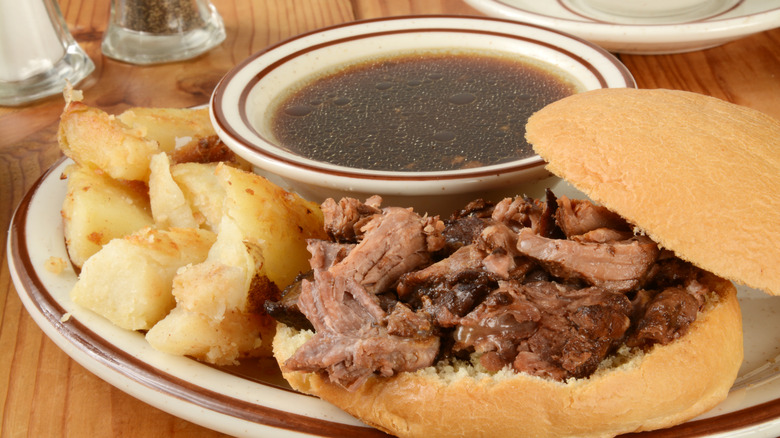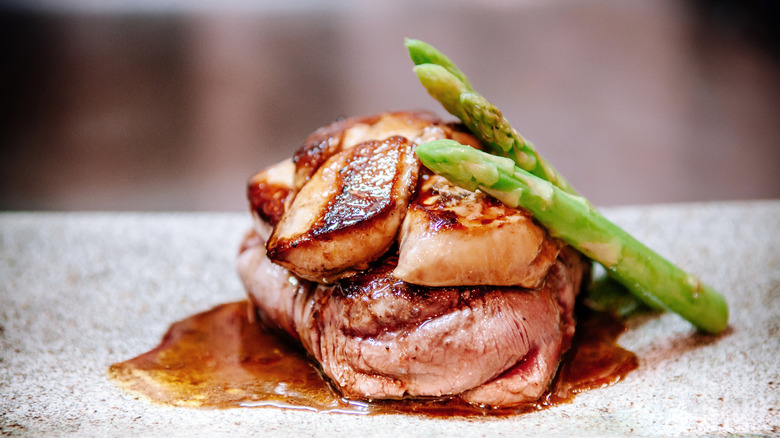What Does It Mean To Serve A Dish 'Au Jus'?
One of the most difficult qualities of cooking with meats and fish is to keep it from drying out.
Smithsonian Magazine reports that the book "Culinary Reactions" explains this phenomenon. Just about any cut of meat can easily become dried out and tired from overcooking. The muscle fibers of the meat are protected by gelatin sacs that help them stay tender during cooking. However, high temperatures cause moisture in the fibers to evaporate and the sacs to burst, which makes the meat tough and dry.
One way to add moisture back into your meat after it's finished cooking is to serve it with a sauce. Otao Kitchen claims that sauces are great for adding juiciness to a dish and improving their mouth feel as well.
Healthline says that some of the most common sauces of the culinary world are the five French "mother sauces," which serve as the base for a wide variety of other flavor options, but some can be quite intensive to make. Thankfully, there's an easier option available.
What is au jus?
According to Michelin Guide, 'au jus' means to serve a dish alongside a special type of sauce most often made from its own juices. In French, au jus (pronounced oh zhoo) literally means with juice. This is because it is a simple sauce made with the drippings from a roast (or another cut of meat), or by deglazing the cooking pan with red wine or another liquid. The juices are then cooked further to reduce the sauce down into a velvety smooth texture. It's easy to make au jus yourself, and can even be prepared ahead for dinner parties and other events.
This sauce is great with roast meats and helps to incorporate fat and moisture back into tough cuts of meat. The most obvious example is the French Dip sandwich which takes its name from the side of au jus for dipping. Thrillist points out that Chicago's famous Italian beef sandwiches are also known for their juice. Customers can order their sandwich "dipped" which means the completed sandwich goes into the cooking juices.
Culinary Lore adds that just about any dish can be served au jus though. Even a mushroom version can be made by simply cooking mushrooms in a broth or water, and then letting it reduce.
Difference between au jus and gravy
One important distinction is that au jus is not gravy. The two are very similar because they both make use of drippings from roast meat, but there is a difference between the two.
As Michelin Guide points out, the way to make the jus is to reserve the drippings, strain, and cook. Gravy goes a step further though. What's Cooking America says that a gravy may start with the same juices leftover from roasting, but it is also thickened by an agent like flour or cornstarch. This combination of starch, liquid, and fat creates a roux that produces a thicker sauce than the au jus.
40 Aprons may sum it up best with its description, "jus is basically a thin gravy." While the jus will thicken up as it is reduced, it should not have the same texture as gravy. It should be mostly liquid fats instead.


